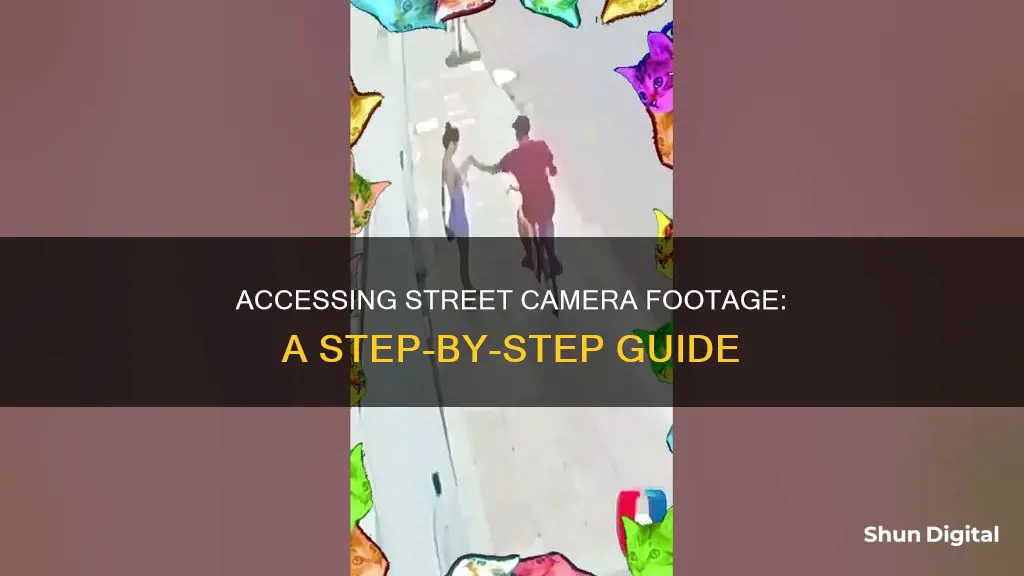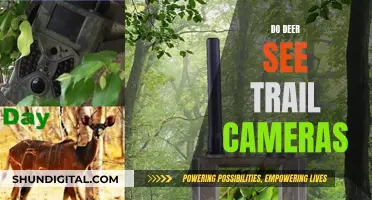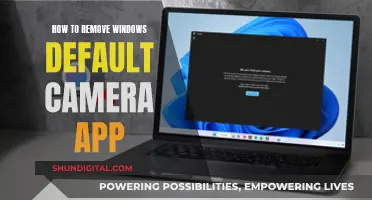
Traffic camera footage can be crucial in determining the cause of a car accident and holding responsible parties accountable. However, obtaining this footage can be a complex and frustrating process. The process of obtaining traffic camera footage varies depending on who owns and controls the camera. For state and local government-controlled cameras, you must contact the relevant government agency to request a copy of the video. For privately-owned cameras, you can contact the individual or business to request a copy, but if they refuse, you may need to pursue legal processes. Online platforms, traffic monitoring apps, and dedicated traffic camera apps provide easy access to traffic camera feeds, helping commuters make informed decisions about their travels.
| Characteristics | Values |
|---|---|
| Purpose | Monitoring and managing traffic flow, enhancing safety, and aiding law enforcement efforts |
| Types | Fixed cameras, mobile units, red light cameras, speed cameras |
| Locations | Intersections, highway ramps, toll booths, construction zones, special events, urban areas, school zones, public transportation hubs |
| Access | Online platforms, websites, traffic monitoring apps, navigation apps, dedicated traffic camera apps, traffic camera networks |
| Benefits | Real-time traffic updates, avoiding traffic jams and accidents, planning alternative routes |
| Considerations | Privacy concerns, legal implications, ethical use of data |
What You'll Learn

Identify the location of the street camera
Identifying the location of a street camera is an important step in obtaining footage from a specific date and time. This is especially true in the case of traffic cameras, where knowing the exact camera that captured an incident can make the difference in a legal case.
Police Reports
One way to identify the location of a street camera is to review the police report from the incident in question. Police reports often include detailed information about the location of the incident, which can be used to determine the likely location of any relevant street cameras. This information can be used to contact the local police department or the Department of Transportation to request footage from a specific camera.
Local Authorities
If you don't have access to a police report, you can contact your local police department or the Department of Transportation directly. These departments typically have records of the locations of street cameras within their jurisdiction. They may be able to provide you with a map or list of camera locations, or you may need to describe the specific location you're interested in to see if there are any relevant cameras in the area.
Private Companies
In some cases, street cameras may be operated by private companies rather than government agencies. These companies may have installed cameras for security or other purposes, and they may be willing to provide footage upon request. Identifying the private company that operates a particular camera can be more challenging, but it may be possible by looking for signs or markings on or near the camera that indicate the operating company.
Visual Identification
Another approach to identifying the location of a street camera is to look for distinctive features or landmarks in the footage itself. This can be especially useful if you have access to the footage but don't know the exact location where it was captured. By identifying buildings, street signs, or other unique features in the footage, you may be able to narrow down the possible locations and identify the specific camera.
Camera Systems
Finally, it's worth noting that not all street cameras are part of a centralised system. Some cameras may be standalone installations, while others may be part of a smaller network operated by a local business or organisation. In these cases, identifying the specific camera or network may be more important than determining its exact geographic location.
Mounting PSVR Camera: On Top of TV
You may want to see also

Determine the jurisdiction of the camera
Once you've identified the location of the street camera, you need to determine its jurisdiction. This is important because it will determine who to contact to obtain the footage.
Different agencies have jurisdiction over different areas of a city or state. For example, in the US, the jurisdiction might lie with the local police department, the Department of Transportation, or a private firm, depending on the state and county.
If the camera is located in an area under the jurisdiction of a different agency, they will need to be involved in obtaining the footage. For example, if the camera is located in Henderson, Nevada, the Las Vegas police would need to involve the Henderson police, who oversee their own jurisdiction.
Identifying the jurisdiction of the camera will help you determine the correct agency to contact to obtain the footage. This is a critical step, as contacting the wrong agency may result in delays or complications in obtaining the desired footage.
Once you have identified the jurisdiction, you can then proceed to contact the appropriate agency to request access to the footage. This may involve reaching out to their representatives via official channels such as phone numbers, websites, or specific email addresses.
Controlling Your Camera with the Galaxy Watch 4: A Guide
You may want to see also

Contact the relevant agency
Once you have identified the agency responsible for the street camera footage, the next step is to reach out to their representatives. The relevant agency will depend on the type of camera and who owns it. For example, state and local government cameras are typically operated by the local police department, department of transportation, or a private firm. For privately-owned cameras, such as businesses' surveillance cameras or individuals' dashcams, you will need to contact the owner directly.
Regardless of whether the camera is operated by a government agency or a private individual, they will have contact information available. You can typically make a request for street camera footage via phone, email, or by filling out a form on the relevant website. It is important to include as many details as possible in your request, such as the date, time, and location of the incident, to help the agency locate the correct footage.
In some cases, a government agency may require you to provide a release form before they release the footage. This form will include a statement that you will not use the footage for any purpose other than your own personal use. Additionally, some agencies may charge a fee for providing the footage, so be sure to inquire about any potential costs before finalizing your request.
If you are having difficulty obtaining street camera footage or if the owner of a private camera refuses to provide the footage, you may need to seek legal assistance. An attorney can help ensure that your requests are filed correctly and can assist you in obtaining camera footage from private businesses and individuals. They can also send records preservation requests to ensure that videos and records are not deleted before you have a chance to obtain them.
Apple Watch 4: Camera Functionality Explored
You may want to see also

Request the footage
Requesting street camera footage can be a complex and frustrating process, but it is possible to do so. Here is a step-by-step guide on how to request street camera footage:
Step 1: Identify the Camera's Location
First, you need to identify the location of the street camera that may have captured the footage you are interested in. This can be done by reviewing the police report, contacting the local police department, or referring to resources such as Google Street View or PhotoEnforced.com, which provides a map of traffic camera locations.
Step 2: Determine the Jurisdiction of the Camera
Once you know the location of the camera, you need to determine which agency has jurisdiction over it. The camera may be operated by the local police department, the Department of Transportation, or a private company. This information is crucial because it will determine who you need to contact to obtain the footage.
Step 3: Contact the Appropriate Agency
After identifying the agency responsible for the camera, you can reach out to them to request the footage. This can usually be done by phone, email, or through their website. Be prepared to provide details such as the date, time, and location of the incident, as well as any other relevant information.
Step 4: Follow Up on Your Request
After making your initial request, it is important to follow up with polite emails or phone calls to ensure that your request is being processed. The agency may require you to fill out a release form and may charge a fee for providing the footage, so be sure to ask about any requirements or costs before finalising your request.
Step 5: Review the Footage
Once you receive the footage, review it carefully and take note of any relevant details. Remember that the footage may contain sensitive information, so use it responsibly and only share it with those who have a legitimate need to see it.
It is important to act quickly when requesting street camera footage, as these recordings are often stored for a limited period, ranging from a few days to several weeks or months. After this time, the footage may be recorded over or deleted and will no longer be recoverable.
Watching Camera Footage on PC: Easy Steps to Follow
You may want to see also

Review the footage
Once you have obtained the street camera footage, it is important to carefully review the footage for any relevant details. This may include vehicle positions, speeds, and other information that can help determine the cause of an incident or accident. It is important to remember that the footage may contain sensitive information, such as the identities of individuals involved, so it should be handled responsibly and shared only with those who have a legitimate need to see it.
When reviewing the footage, it is helpful to have a clear idea of what you are looking for. For example, if you are trying to determine the cause of a car accident, you may want to pay close attention to the movements of the vehicles involved and look for any violations of traffic laws. If you are reviewing footage for security purposes, you may be looking for any suspicious behaviour or activities. Having a specific focus can help you make the most of your time and ensure you don't miss any important details.
Take detailed notes while reviewing the footage. Note the time and date of the footage, as well as any relevant details you observe. This can include descriptions of vehicles, individuals, or activities taking place. Note any potential evidence that may support your claim or investigation. For example, in the case of a car accident, you may want to note the position and speed of the vehicles, the presence of any road hazards, or any traffic violations that occurred.
In some cases, you may need to enhance or analyse the footage further. This may involve adjusting the brightness, contrast, or other settings to get a clearer view of the scene. You may also want to zoom in on specific areas of the footage to get a closer look at certain details. If you are working with low-quality or blurry footage, consider seeking the help of a video expert who can enhance the footage using specialised software or equipment.
Finally, if you are using the footage as evidence in a legal case or investigation, it is important to handle it properly. This may involve storing the footage securely and ensuring that it is not altered or tampered with. If you need to share the footage with others, be sure to keep a record of who has accessed it and for what purpose. In some cases, you may need to provide a chain of custody that documents the handling and transfer of the footage to ensure its integrity.
Accessing Live Camera Feeds on Your Mobile Device
You may want to see also
Frequently asked questions
Street camera footage can be accessed through various online platforms, websites, and mobile applications that provide real-time traffic information. These include government websites, traffic monitoring apps, and dedicated traffic camera apps.
It is important to familiarize yourself with the locations of the cameras, understand the camera angles and perspectives, and know the best times to view the footage. Interpreting traffic conditions from the footage requires analysing factors such as vehicle speed, lane usage, and weather conditions.
By viewing street camera footage, users can access real-time traffic updates, avoid traffic jams and accidents, and plan alternative routes efficiently. This information is especially valuable for commuters, enabling them to make informed decisions about their travels and navigate through complex transportation networks.
The use of street camera footage raises important privacy and ethical issues. Users should be aware of privacy policies, regulations, and their rights and responsibilities when using this footage. Ethical considerations include being mindful of how the footage is shared and ensuring transparency and accountability in its use.
The retention period for street camera footage varies depending on the jurisdiction and the specific camera system. In general, footage may be stored from a few days to several weeks, months, or even years. It is recommended to request the footage as soon as possible, as some agencies may delete it within 14-72 hours.







